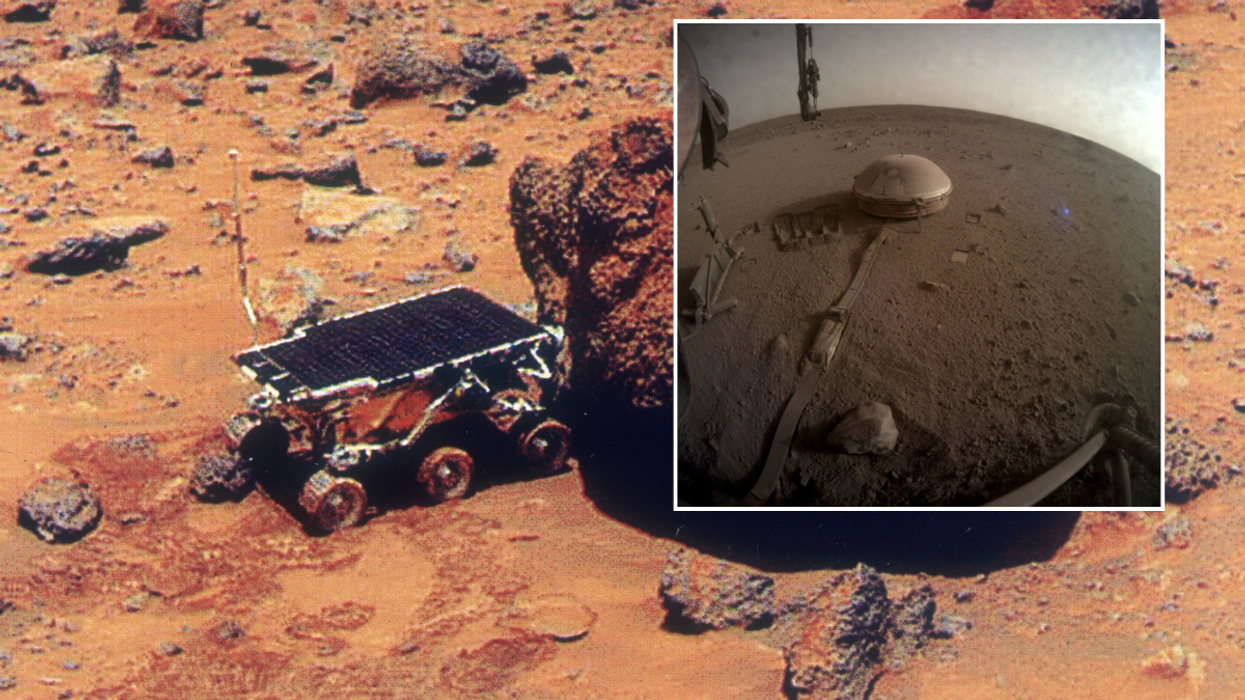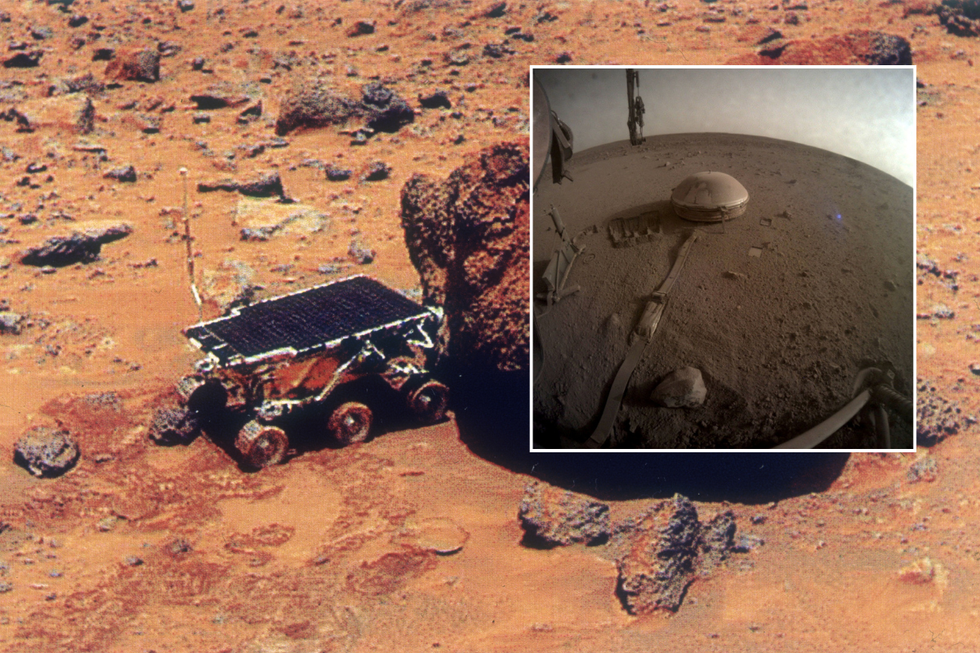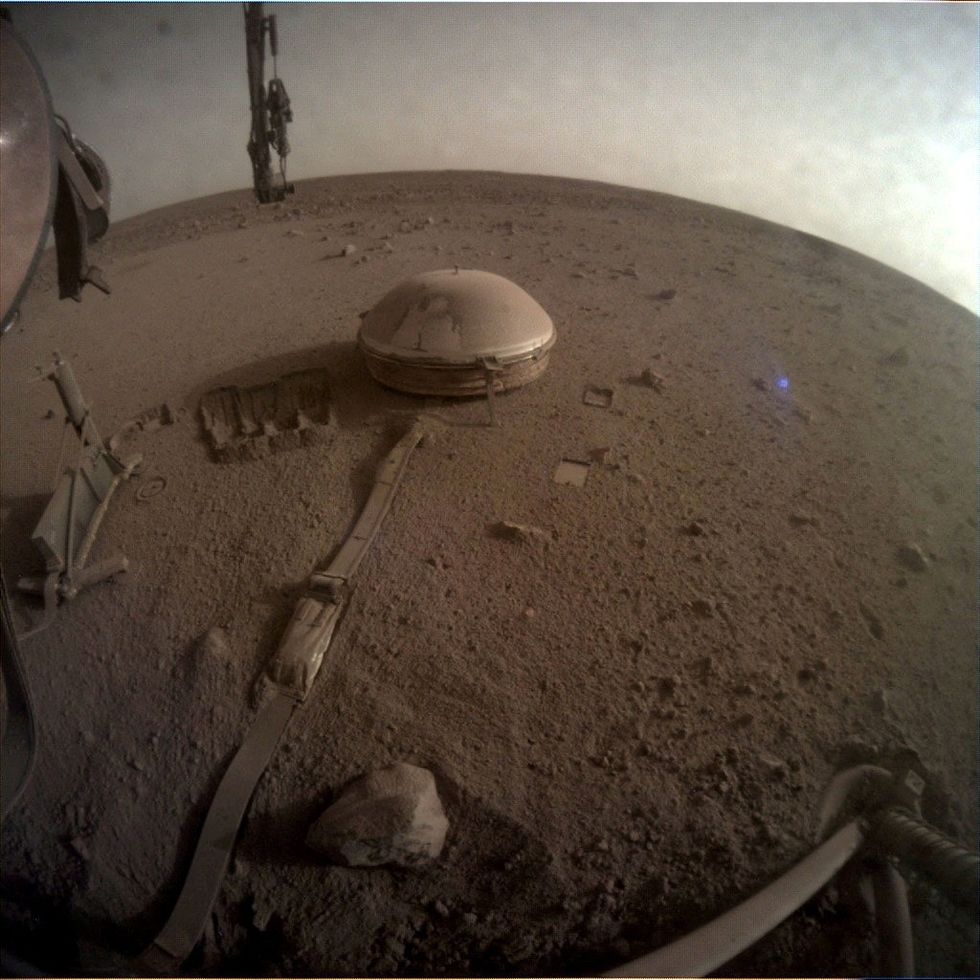Life on Mars hopes soar after breakthrough discovery by scientists

View of the InSight's seismometer on the Martian surface | Reuters

An immense reservoir of liquid water may reside deep under the surface of the Red Planet
Don't Miss
Most Read
Latest
Scientists hoping to find proof of life on mars have found evidence of a reservoir of water that could at one point have sustained life.
The body of water resides deep under the surface of Mars within fractured igneous rocks, holding enough to fill an ocean that would cover the entire surface of Earth's planetary neighbour.
The discovery follows seismic data obtained by NASA's robotic InSight lander during a mission that helped decipher the interior of Mars.
The water, located about 7.2 to 12.4 miles (11.5 to 20 km) below the Martian surface, potentially offers conditions favourable to sustain microbial life, either in the past or now, the researchers said.

View of the InSight's seismometer on the Martian surface
|Reuters
University of California planetary scientist and co-author of the study Vashan Wright said: "At these depths, the crust is warm enough for water to exist as a liquid. At more shallow depths, the water would be frozen as ice."
The InSight lander touched down in 2018 to study the deep interior of Mars, gathering data on the planet's various layers, from its liquid metal core to its mantle and its crust. The InSight mission ended in 2022.
Fellow co-author Michael Manga said: "On Earth, we find microbial life deep underground where rocks are saturated with water and there is an energy source. InSight was able to measure the speed of seismic waves and how they change with depth.
"The speed of seismic waves depends on what the rock is made of, where it has cracks and what fills the cracks. We combined the measured seismic wave speed, gravity measurements and rock physics models. The rock physics models are the same as the ones we use to measure properties of aquifers on Earth or map oil and gas resources underground."
LATEST DEVELOPMENTS

One of the last images taken by NASA's InSight Mars lande
|Reuters
The data indicated the presence of this reservoir of liquid water within fractured igneous rocks - formed in the cooling and solidification of magma or lava - in the Martian crust, the planet's outermost layer.
Wright said: "Mid-crust whose rocks are cracked and filled with liquid water best explains both seismic and gravity data
"The water exists within fractures. If the InSight location is representative and you extract all the water from the fractures in the mid-crust, we estimate that the water would fill a 1-2 km deep (0.6-1.2 miles) ocean on Mars globally."
The Martian surface is cold and desolate today but once was warm and wet. That changed more than 3 billion years ago. The study suggests that much of the water that had been on the Martian surface did not escape into space, but rather filtered down into the crust.
Manga added: "Early Mars had liquid water on its surface in rivers, lakes and possibly oceans. The crust on Mars could also have been full of water from very early in its history, too,
"On Earth, groundwater underground infiltrated from the surface, and we expect this to be similar to the history of water on Mars. This must have occurred during a time when the upper crust was warmer than it is today."
Water would be a vital resource if humankind ever is to place astronauts on the Martian surface or establish some sort of long-term settlement.
Mars harbours water in the form of ice at its polar regions and in its subsurface. But the depth of the apparent underground liquid water would make it difficult to access.










